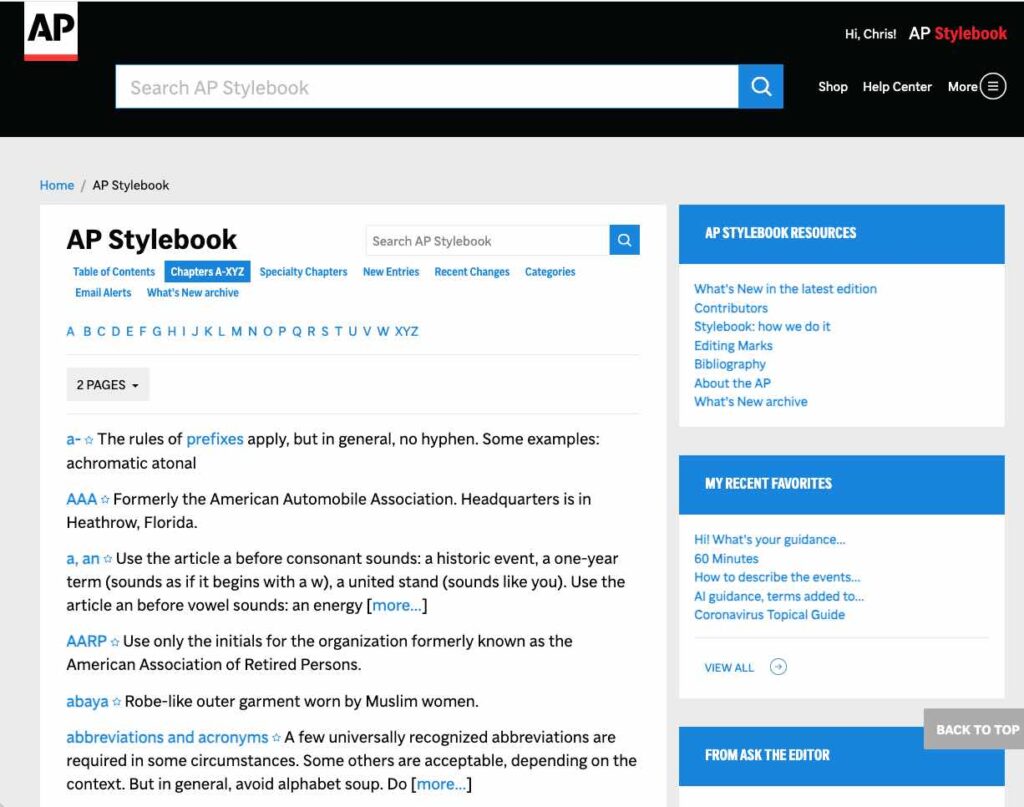Many B2B employees may not realize that having an established writing style for their business is a key ingredient in crafting a successful content experience. In fact, most leading brands develop and adhere to their own in-house style guidelines, also known as a house style guide. That’s because they know that having a well-developed editorial style guide will help them put their best foot forward—with content that’s clear, consistent, on-brand, and high quality.
A House Style Guide Puts You on Firm Footing
Think of writing style as the floor on which you build your company’s communications. If the floor has a loose flap of carpet, staffers and visitors will trip on it or divide their attention to step around it.
The same is true of sudden shifts in editorial style. If your customers have become accustomed to serial commas, article titles in quotation marks, and conversational language vs. formal, academic writing, changes from the usual way of presenting information can distract and confuse.
Some users may not consciously notice the inconsistencies. But they will likely feel less surefooted as they waste brainpower on making sense of words and phrases all over again.
Meanwhile, customers who do notice the haphazardness of your content may be put off by it. They may judge your company more harshly and even question your professionalism and attention to detail.
If you can’t get the little things right, users will have a harder time trusting you on the big things.
Learn and Customize Your Style
A house style guide helps content teams present a polished brand image to the world. If your company already has house style guidelines, find out what they are, and take some time to get familiar with them. If your company doesn’t have an editorial style guide, it needs one—for all the above reasons.
Most businesses don’t build a style guide from the ground up. Several already exist, each with its own advantages. The two that businesses most commonly choose are the Associated Press (AP) Stylebook and The Chicago Manual of Style. Most U.S. newspapers, digital companies, and public relations firms use the AP Stylebook, which is relatively uncomplicated and succinct. Periodicals, journals, and book publishers tend to favor Chicago, which is more comprehensive in its coverage of writing style use cases.
Many companies also specify a preferred dictionary, something that reflects geographic location.

Companies that use a style manual often add their own points of house style. For instance, although Tendo Communications has adopted AP style as its main writing guide, we diverge from AP by, for example, using the serial comma to avoid misunderstandings and improve clarity.
Even companies that closely follow a style guide such as AP Style and an approved dictionary (think Merriam-Webster or the Oxford English Dictionary) may need to come up with their own specialized word list. This list serves as a helpful reference for technical terms or commonly used words in your business or industry.
Spruce Up Your Style Guide
If your company doesn’t already have a house style guide, start small. Pick a basic style guide and dictionary. As you use them, you’ll start to notice where your company’s unique needs require additional or more specific guidelines. Make your word list and your list of exceptions customizing your style guide to support and enhance all your brand communications. You can use Tendo’s handy editorial style guide checklist to make sure your document includes all the essential elements.
Think of your house style guide as an organic document (just as you would think of a content governance framework or AI content playbook). Expect to update it regularly so it evolves with and accommodates the changing needs of your business, brand, and customers.
Consistent adherence to a house style guide makes your business look more polished, organized, and up to date. And most importantly, it makes it easier for your audience to focus on what matters—your business and brand.
Need Help Creating a House Style Guide?
Empower your content creators to write clearly, concisely, and professionally. Tap Tendo’s content governance services to help you create an editorial style guide tailored to your specific needs. Contact us today.
First published September 3, 2015









